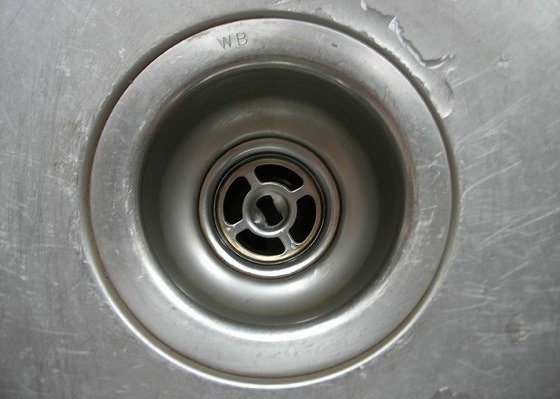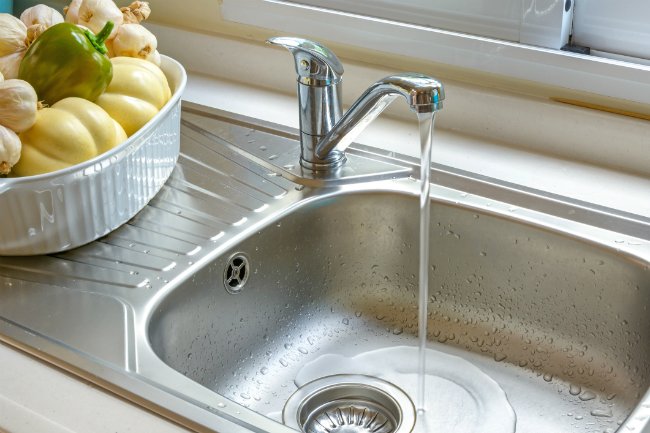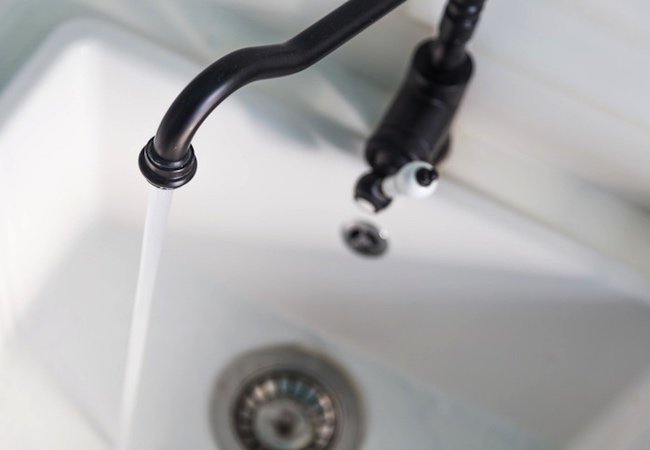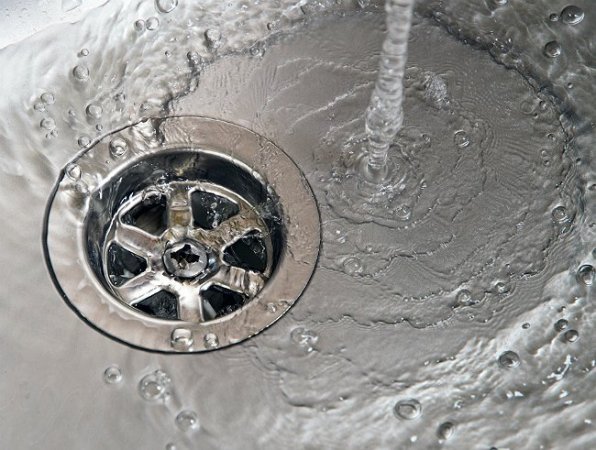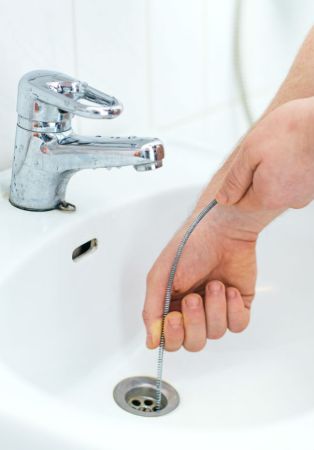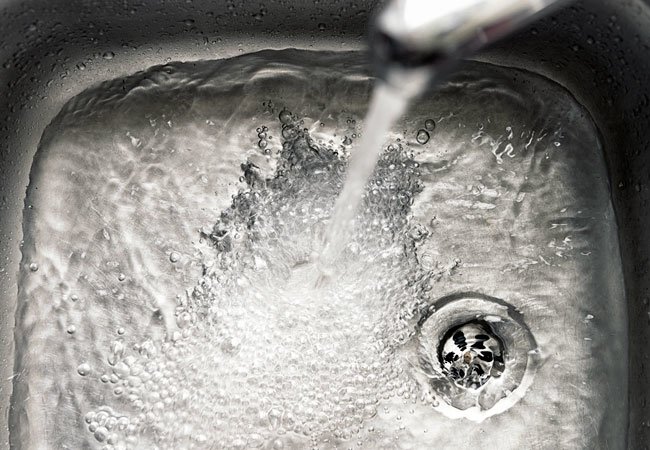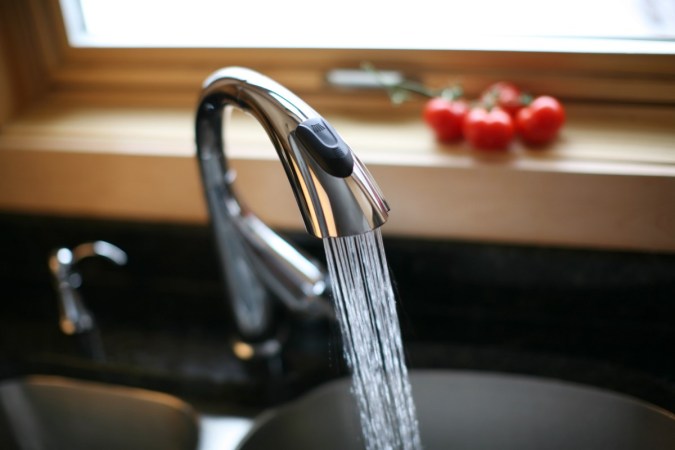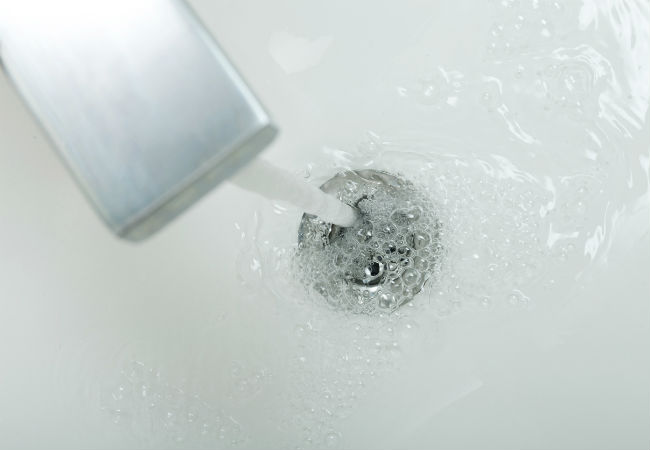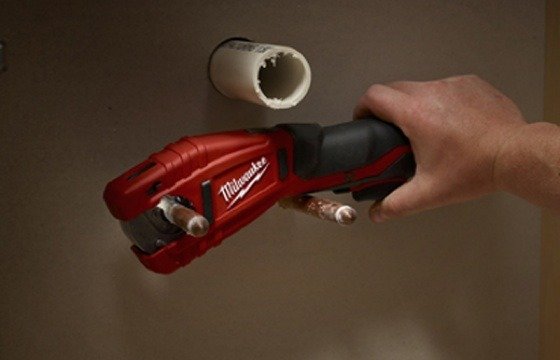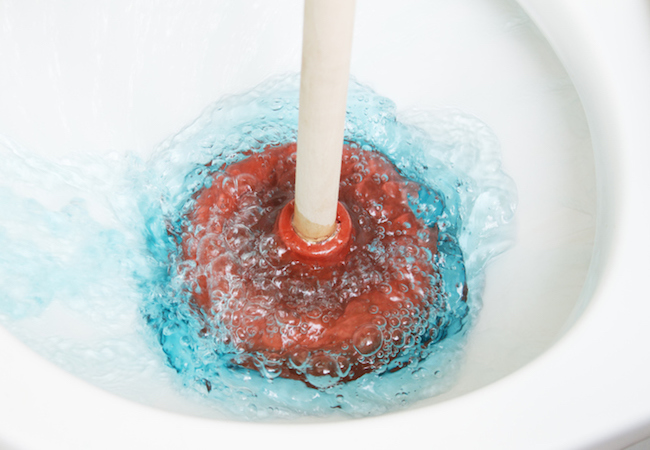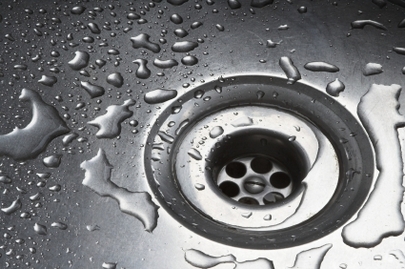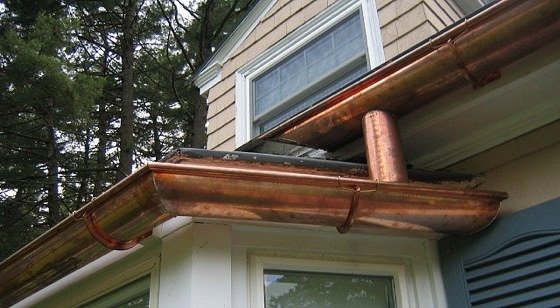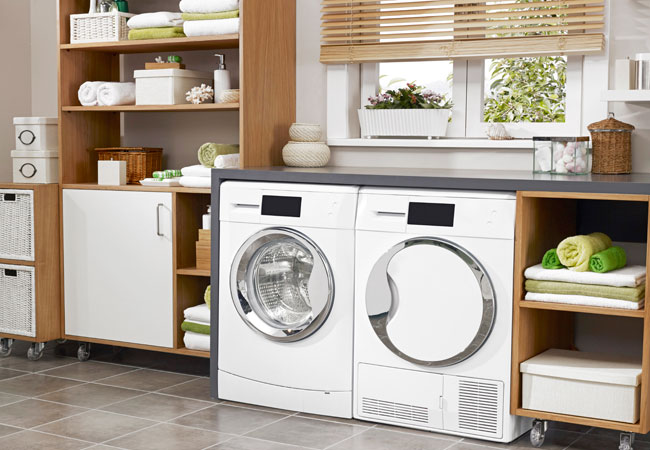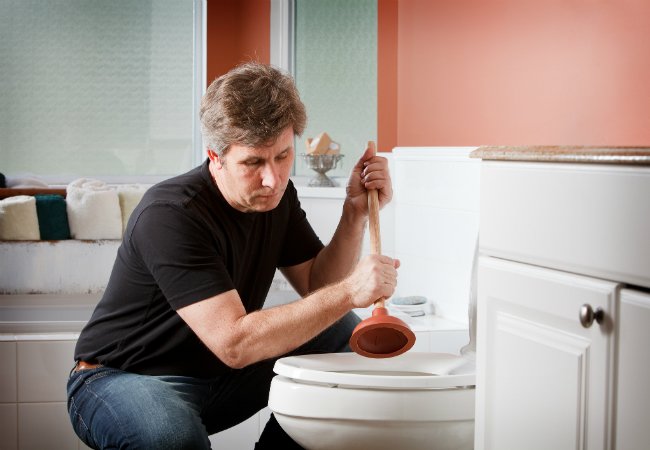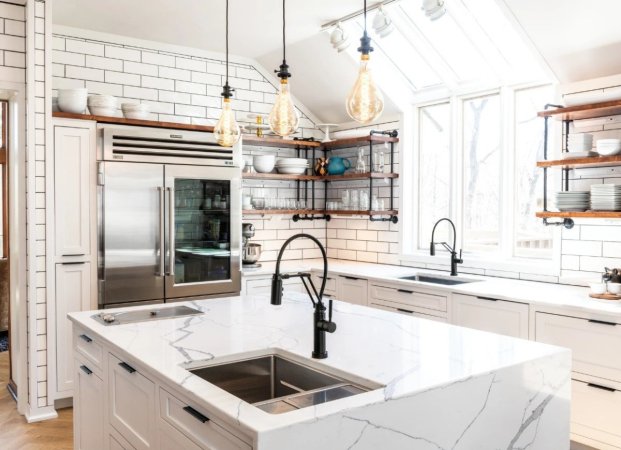We may earn revenue from the products available on this page and participate in affiliate programs. Learn More ›
Be Gentle on Old Drains
A partial clog can be cleared by cleaning out the drainpipe. Older plumbing can be damaged by using harsh drain chemicals, so opt for a naturally biodegrading drain cleaner or use this homemade solution: pour a half cup of baking soda down the drain, then slowly add a cup of white vinegar. Cover the drain for five minutes, then flush with a gallon of boiling water.
When to Use a Plunger
Some clogs call for a plunger. The key here is to create a vacuum. If you’re working on the kitchen sink, you need to clamp off the dishwasher hose and seal the drain openings in the other sink basins. If it’s the bathroom sink or tub, plug the overflow opening with a wet rag. With at least a couple inches of water in the basin, plunge rapidly several times, pulling up sharply at the end to move the clog. You may need to do this several times.
When to Try Alternate Tools
If plunging doesn’t clear the clog, use an auger. If your drain opening is obstructed, sometimes a coat hanger wire with a small hooked end will bring up the clog. You can also detach the trap under the sink with a plumber’s wrench in order to get at the clog or to rescue anything you’ve lost down the drain.
When to Call a Plumber
If you don’t see an improvement in drainage after all of that, and especially if more than one drain is slow in your house, you should consult a plumber since the problem could be caused by blocked or improper venting of the wastewater system.

